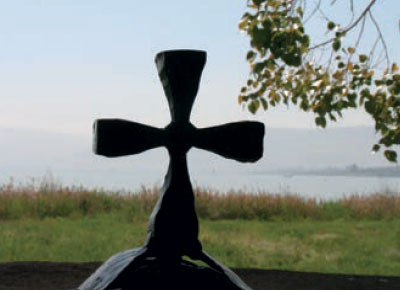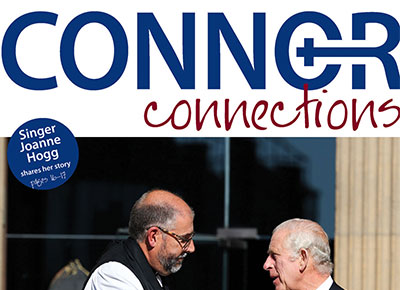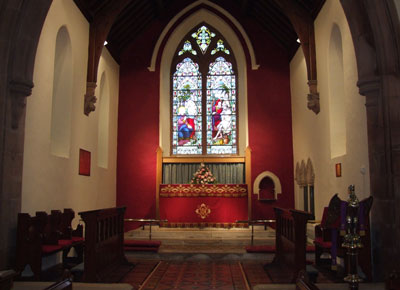Requiem to the Lost Souls of the Titanic
 What more moving a memorial could there be to the hundreds who died the night the Titanic perished than a requiem composed in their honour.
What more moving a memorial could there be to the hundreds who died the night the Titanic perished than a requiem composed in their honour.
Yet Philip Hammond, and composer of the new ‘Requiem to the Lost Souls of the Titanic’ is keen to point out that this is not about the boat.
Philip wrote his requiem with two people in mind – Roz Levine who was 95–years–old when she died in Portland, Oregon, and to Miriam Agee, the daughter of a colleague, who died aged four.
It is a requiem dedicated to a very old person and a very young person, he said. “Within my own experience, they mirrored the huge range of people who lost their lives as a result of the Titanic disaster.”
Philip grew up in east Belfast under the eye of Goliath – the shipyard was part of his childhood, he remembers the Canberra, the last big liner to have built there, sailing down the lough.
Now his Requiem for the Lost Souls of the Titanic will be staged at St Anne’s on April 14, 100 years to the day that the unsinkable liner struck the fateful iceberg in the north Atlantic.
“It is part of history and it is part of who we are,” Philip said of the Titanic disaster. “I have spent three years putting the requiem together and it has developed into six choral movements and five musical meditations.
“These are a reflection of the musicians who stayed for the last moments and went down with the ship.
“No–one really knows what the musicians played and it is subtle,” he said.
He has taken a phrase from different versions of the hymn “Nearer my God to Thee” which so many people associate with the final dying moments of the ship and its passengers.
Hammond has also used Irish folk songs from the 1792 Belfast Harp Festival, including the Lamentation of Owen O’Neill and A Parting of Friends.
Writer Glenn Patterson will read his own meditations on those who were on the boat – like the radio operator who kept sending out the same distress message again and again, until the last moment, when he and his friend jumped. He survived, his friend died.
“These thoughts about the people complement the musical meditations,” said the composer.
Requiem for the Lost Souls of the Titanic is set to words from the original Latin Requiem Mass.
It will be sung by Belfast Philharmonic Society; Anuna; Schola Cantorum of St Peter’s Cathedral, Belfast and Cappella Caeciliana. Brass instruments drawn from the Downshire Brass Band will be used.
In an Italian technique dating back from the 15th century, the choirs and instruments will be positioned in different parts of the cathedral, echoing and answering each other across the stone pillars and spaces of the old building and down the years.
The cathedral itself will be part of the story, with seating rearranged to resemble the seating on a boat. It will be specially lit for the occasion and after the requiem, a torchlight procession will walk to the Titanic Memorial in the grounds of Belfast City Hall.
Philip said: “The requiem will indeed be a huge event with over 200 performers. The main point about it is that it isn’t about the boat! So I have tried to point out the universal aspect of the requiem as a form and its inclusiveness if you allow it. For example, I work into the final movement a setting of a Hebrew prayer. The mass itself is being done in both Christian cathedrals in Belfast.”
The requiem will indeed be repeated in St Peter’s Cathedral, Belfast, the following morning as part of an actual Mass.
The details of the requiem and the whole Titanic Festival of Creative Arts are on the internet at www.titanicfestival.com. Tickets are available from the Belfast Welcome Centre.
A FOREWORD FROM THE COMPOSER
The celebration of anniversaries – half–centenaries, centenaries, bicentenaries, millennia – is a peculiar if paradoxical delight of our modern times. Perhaps it gives us a sense of security by confirming us in our concept of historical perspective and human continuity. In this context, we can remember and commemorate any event from the past – even tragedies. They drive us on, from the present into the future.
The disaster that was the sinking of the Titanic happened on the night of April 14th and 15th, 1912. It was not only the worst maritime accident in history to that date – with the loss of over fifteen hundred people – but it also heralded the end of an era. Two years later, Europe – and eventually much of the world – was plunged into a war of monumental proportions. Nothing was, or could be, the same again.
I have lived my life in the virtual shadow of the Belfast shipyard where Titanic and its sister ships were built in the heyday of the Northern shipbuilding industry, during the early years of the twentieth century. From Belfast harbour, I remember hearing the ships’ horns bringing in the New Year – now alas, a thing of the past. But the sea and its ships will always be an obsession with the island–born.
This “Requiem for the Lost Souls of the Titanic” sets words from the original Latin Requiem Mass, and towards the end, a single Hebrew prayer. For personal reasons, I have not used much of the text connected with the Dies Irae sequence. To my taste, it dwells too much on the guilt–ridden invective of some aspects of Christian doctrine.
This setting is dedicated to two people – one who died very old, and one who died very young. Within my own experience, they mirrored the huge range of people who lost their lives as a result of the Titanic disaster.
Interpolated between the various sections of the Latin Requiem text is a series of short writings by the Belfast–born novelist Glenn Patterson. These call to mind thoughts on the people who perished that night one hundred years ago – the “lost souls”. I match these writings with a series of musical “meditations”, all of which are thematically linked to Belfast and the Titanic in both obvious and subtle ways. I use the medium of a piano trio as a tribute to the several musicians who died in the tragedy, which also overshadowed the lives even of the survivors. Many of them became lost souls of a kind as well.
Although I wrote the Requiem in a number of places over the past three years – for example, Portland in Oregon, Korčula in Croatia, Stirling University in Scotland, as well as Belfast in Ireland – just about everyone taking part in this premier has a connection to this city. This is a performance that has its roots in Belfast; as far as I have been able to organise it, it is a Belfast response to the tragedy one hundred years on.
I think of the passage from life to death as being a transition from darkness to light. That thought pervades the progress of this piece and my arguably simplistic philosophy behind it.
Philip Hammond Belfast, February 2012
© Copyright The Church of Ireland Diocese of Connor 2025 | Web Design by LD2.digital




